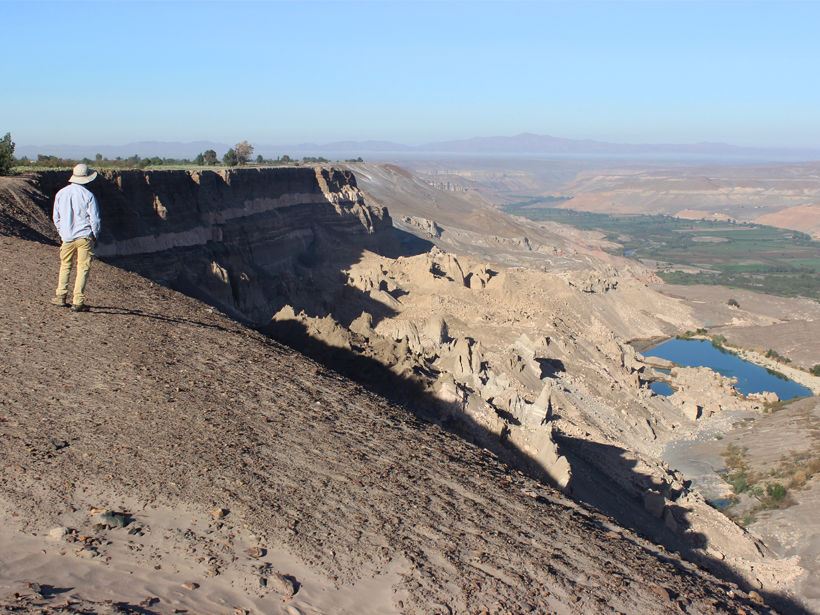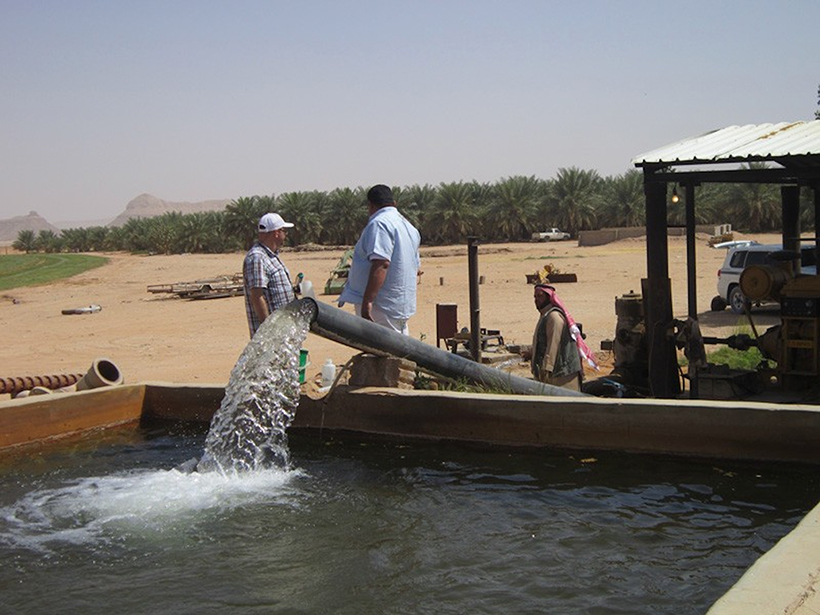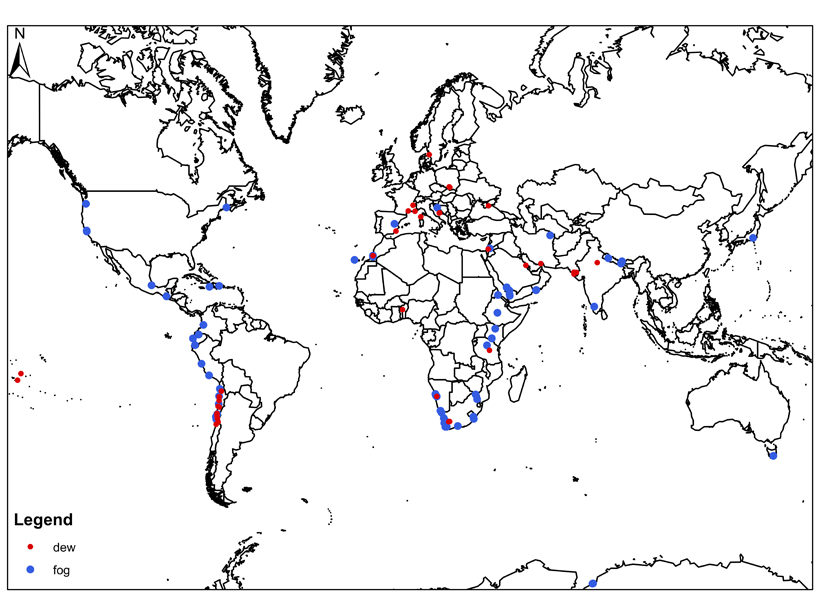Scientists studying a cyanobacterium isolated from rock samples in the Atacama Desert found out how the bacteria extract water to live. Their results may help identify likely sites for life on Mars.
deserts
Modern Farming Kick-Starts Large Landslides in Peruvian Deserts
Large-scale irrigation programs have triggered giant, slow-moving landslides in arid valleys, leading to the destruction of both traditional and modern farmland.
Arid Arabian Peninsula Is Tapping into Vast Groundwater Reserves
A new, multipronged study sheds light on an ancient aquifer system.
Oldest Meteorite Collection Found in World’s Oldest Desert
Rare 2-million-year record reveals the meteorite flux rate.
Precariously Balanced Rocks Reveal Earthquake History in Israel
Using the prevalence of unstable rock formations in Israel’s Negev Desert, researchers determined that historical earthquakes in the region were weaker than previously thought.
Fog Catching for Thirsty Locales
Many arid and semi-arid regions experience very little rainfall, but quite a bit of fog, which might be a viable source of drinking water.
Reversing Earth’s Spin Moves Deserts, Reshapes Ocean Currents
A climate model with reversed rotation of Earth helps climatologists and oceanographers understand why our planet is the way it is and reveals how different it could have been.
Searching for Organic Carbon in the Dry Valleys of Antarctica
Researchers identify the first evidence of microbial respiration in desiccated Antarctic permafrost soils.
New Tool for Understanding Landscape Evolution in Drylands
Combining vegetation distribution models and sediment transport models offers a better understanding of how dryland environments change in response to different factors.
Rocks in Chile Help Scientists Hunt for Life on Mars
Investigating oxalate minerals in the Atacama Desert provides a terrestrial analogue to test techniques that could be used to study the carbon cycle in the cold deserts of Mars.










